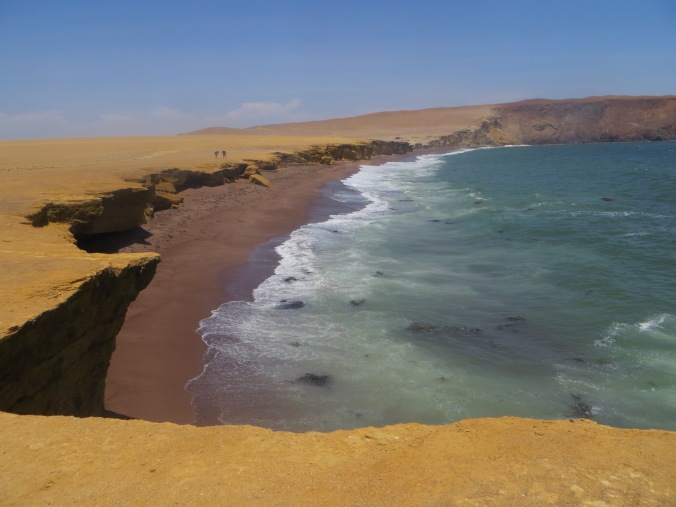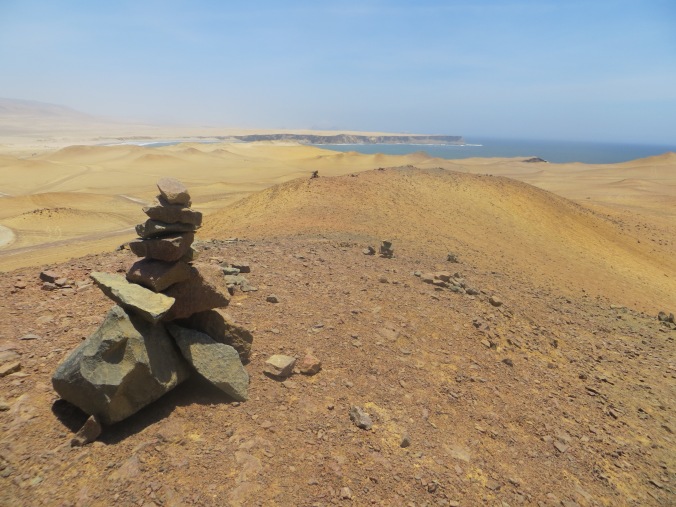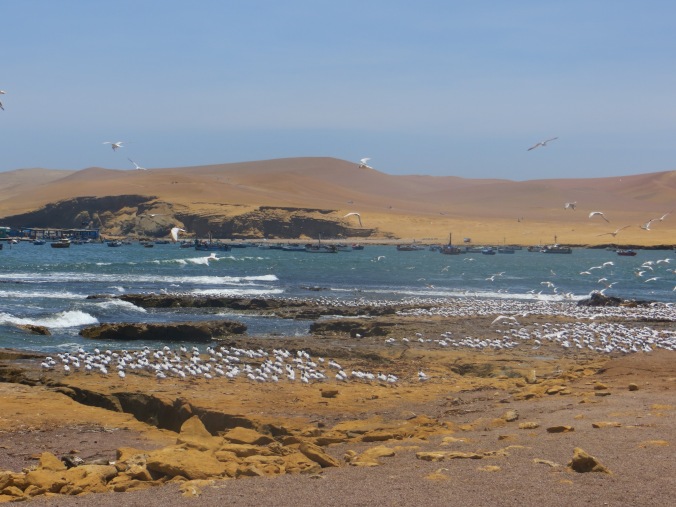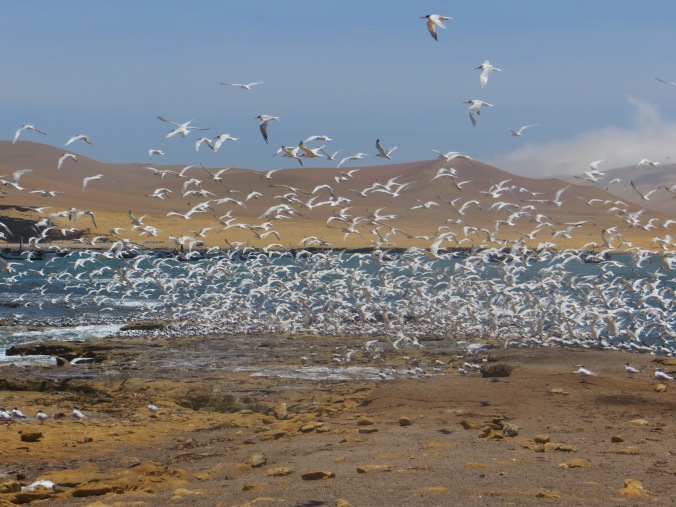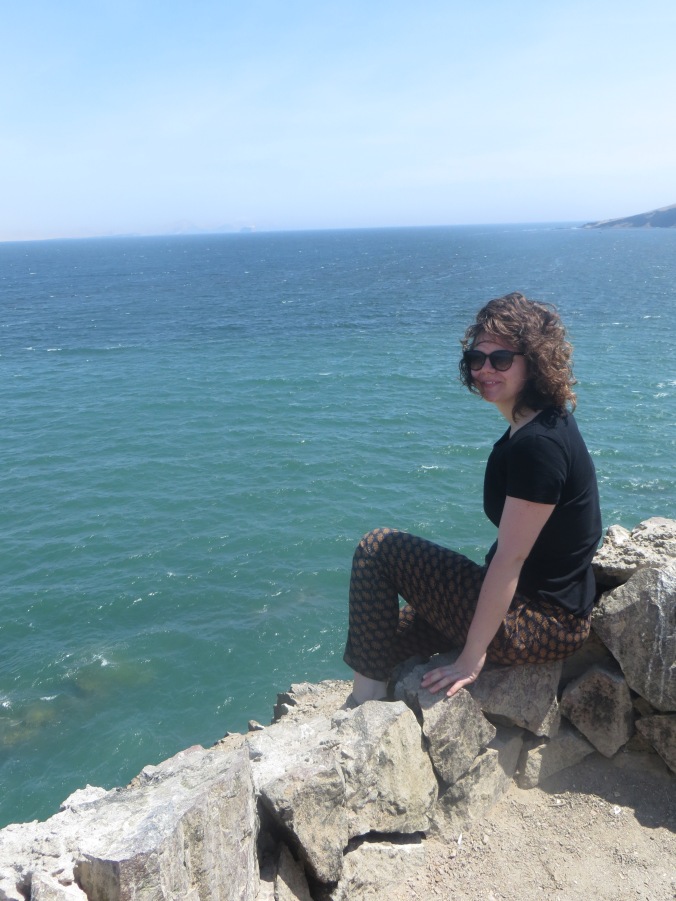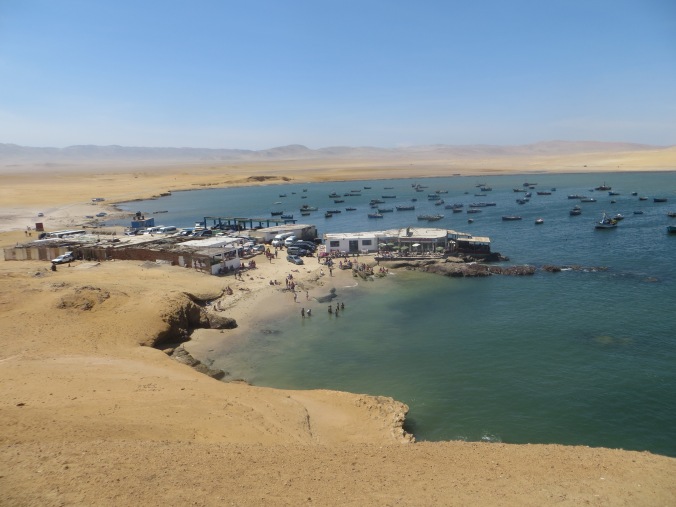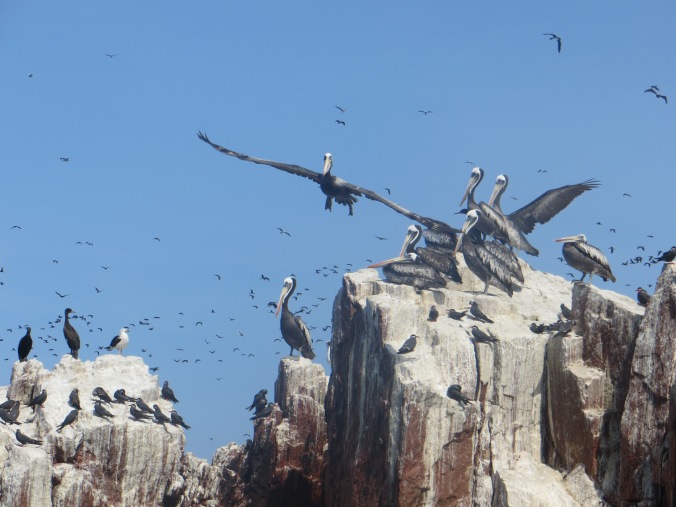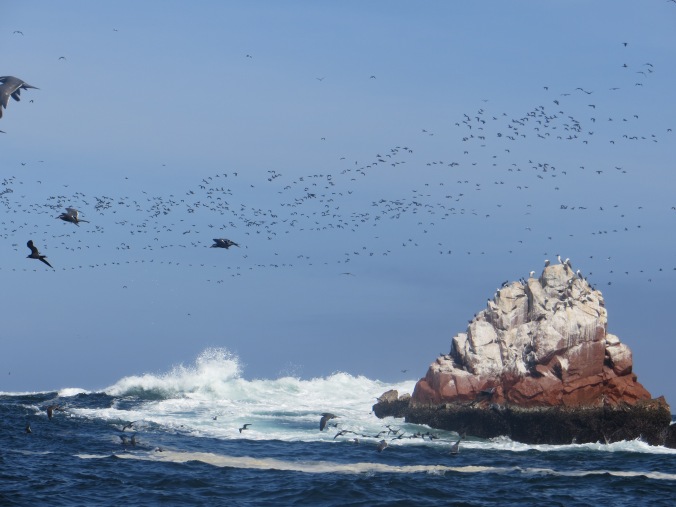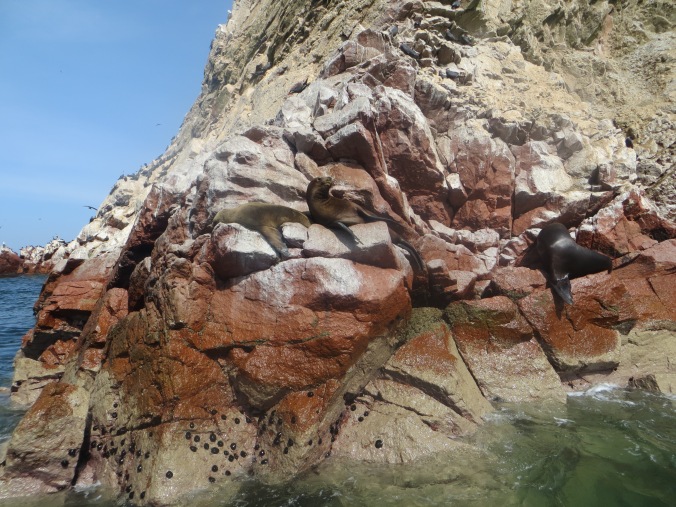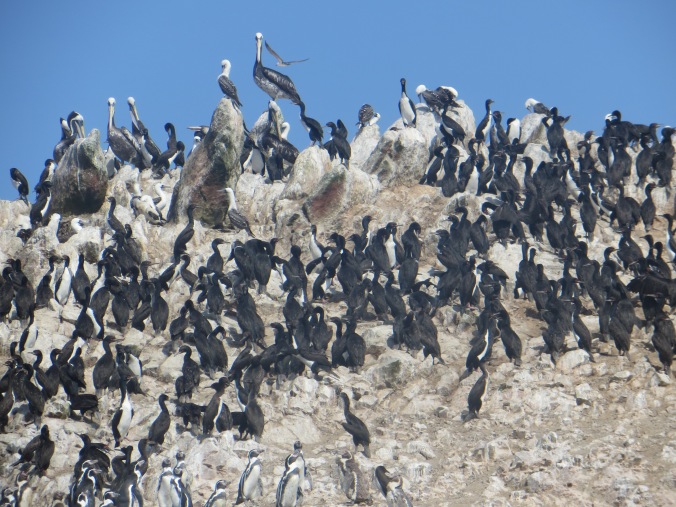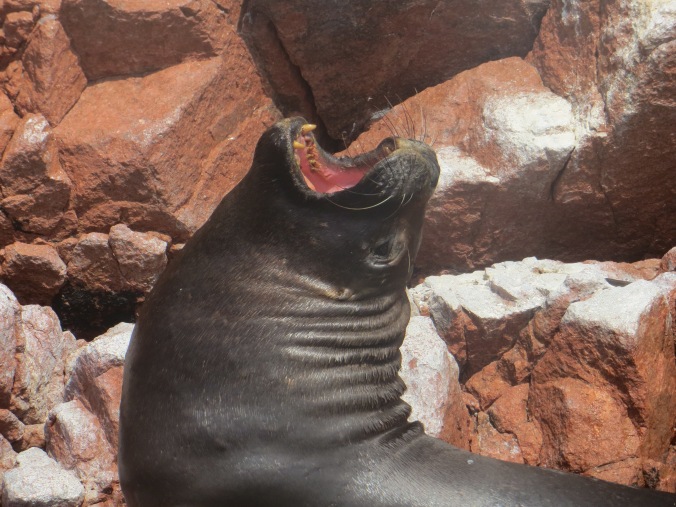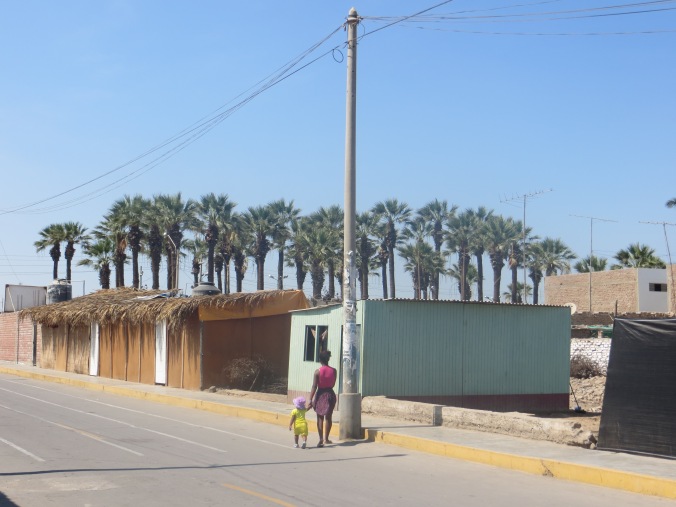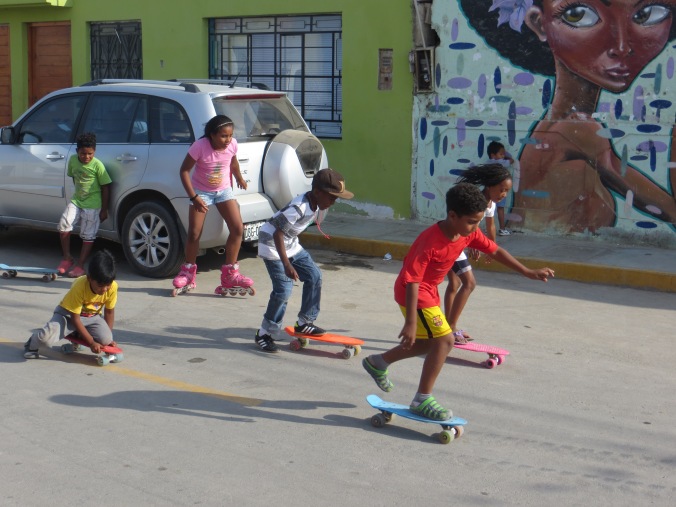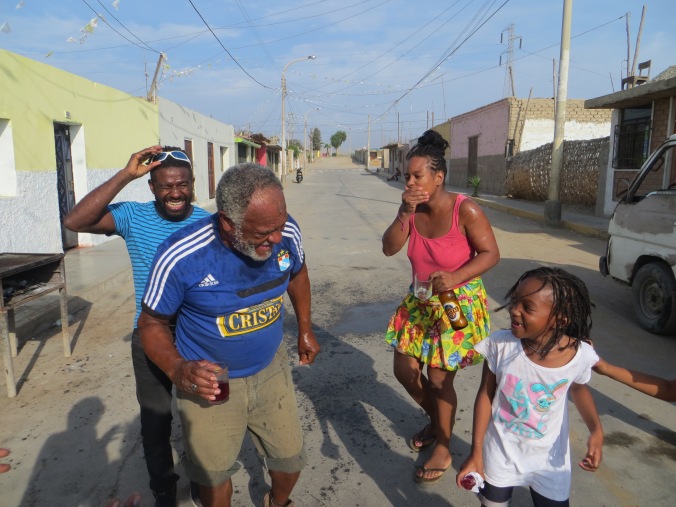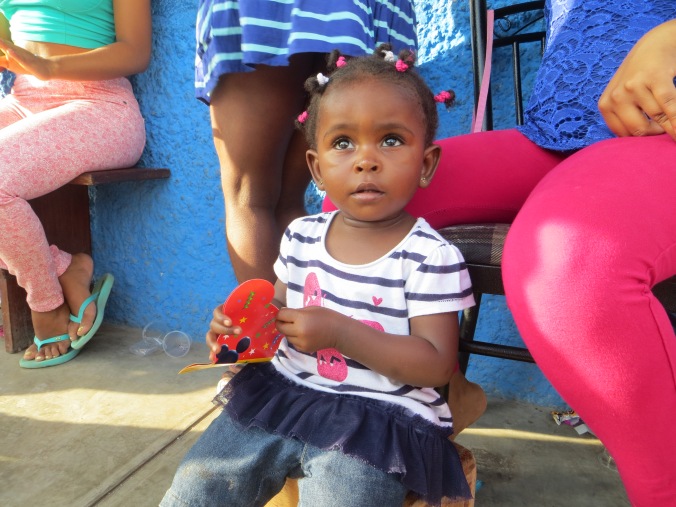Screaming, waving, jumping and squeezing in – if there is one thing I have become good at since my arrival in Lima it is riding a bus. As a European one might think that this is not a thing you have to learn, but let me assure you that it is. In my first week in Peru I have taken 17 (!) different Busses, all while successfully avoiding taxis and ‘Cruz del Sur’, the luxurious but expensive long distance bus company popular with tourists. How this worked out for me? Surprisingly well. And though I have by no means figured out the whole system yet (if there is one) let me pass on what I have learned so far…
To understand how peruvian busses work it is important to know that there are roughly four kinds: micros, collectivos, city and long distance busses. The latter are easiest because once you have found the right bus terminal (there is one for each company) they even have a timetable which might be followed. City busses however are on a whole different scale, especially in Lima.
Imagine standing in a crowded pavement where you have been told your bus stops. There is probably some trash on the dusty pavement and most defnitely no shade. Next to you a Street vendor is selling avocados out of an old shopping cart while reggaeton is blasting from some old car or radio. Honking busses and cars are passing you by constantly, treating the different lanes as if they were mere suggestions. In this chaos some busses approaching the bus stop (and I am using this term loosely) reduce their speed while the drivers assistant keeps screaming the name of its final destination at passers by. And this is where you come in: quickly you try to spot the right bus in the sea of traffic, searching for a tiny number somewhere on the colourful bus as it is almost impossible to figure out what is shouted at you with all the noise going on. If you think you have spotted the right one: congratolatuins! now it is your turn to scream your destination and hurry towards the bus, because surely it will only stop for seconds (if at all). Your best bet is therefore to run and jump into the bus, quickly grabbing a seat before the driver speeds off again. Pro tip for tall people: don’t even try to fit into the inner seat and watch your head! From there on your fate is in the hands of the drivens assistant who will collect money from you within the first 2 to 15 minutes of the ride. They will hopefully tell you shortly before you reach your destination so you can prepare to get off just as quick as you got on the bus.
As you can see, reacting fast is key to successfully riding city busses, but another kind of attention is needed for micros and collectivos. These “busses” typically used for lesser travelled routes are a lot smaller. Whenever people tell you to take a taxi – ask again! – because there is usually a micro or collectivo going right to your destination for 1/4 to 1/10 of the price. As they often wait until full there is much less running and screaming involved. But while city busses are easily indentified as such, micros an collectivos are much harder to spot. Even calling them busses streches the definition of the word. Sometimes they are mini-vans, but more often than not just normal cars. And of course if I say normal cars I mean the type of vehicle that would never in a million years pass the german TÜV. My favourite micro that dropped me off in el Carmen even had a broken front window. So the trick is to find the right spot and then look for a crappier looking taxi that isn’t actually one. Luckily I’d say that asking 2-3 people will usually get you to the right bus and to my surprise even taxi drivers will gladly point you in the correct directon. Also, with about four passengers the thrill of getting off at the right spot is much smaller, but most drivers make up for this with increased speed. So if you enjoy a bit of speed and chaos, peruvian busses are defnitely for you. Who needs rollercoasters, right?
Of course I haven’t even arrived in the Andes where roads are smaller and steeper, so I guess there is a lot more to local busses I still have to learn. So be warned, there might be an ‘advanced guide to peruvian busses’ yet to come…
PS: If you are wondering why there are no pictures with this post – think again! My multitasking has its limits.
